Amazon has put together some great Home Gift Deals – save money and get your shopping done at the comfort of your home! Click here to see deals on Amazon
Every homeowner has the occasional weed in their lawn. Sometimes there are so many that you can’t see any grass. They also compete with the grass for water and nutrients, causing the yard to become less healthy and more susceptible to disease.
Some weeds, such as dandelions, clover, and chickweed, are present in most lawns, along with purple flower weeds. This article has covered nine weed types, including their identification and control methods.
How to identify the purple flower weed taking over the backyard?
These are common in most lawns, but it mainly grows in large quantities during the summer. These weeds often thrive in moist soil that has been fertilized with manure or other nitrogen fertilizers.
Here are the nine most common types you most likely encounter in your yard.
1. Swamp Thistle (Cirsium muticum)
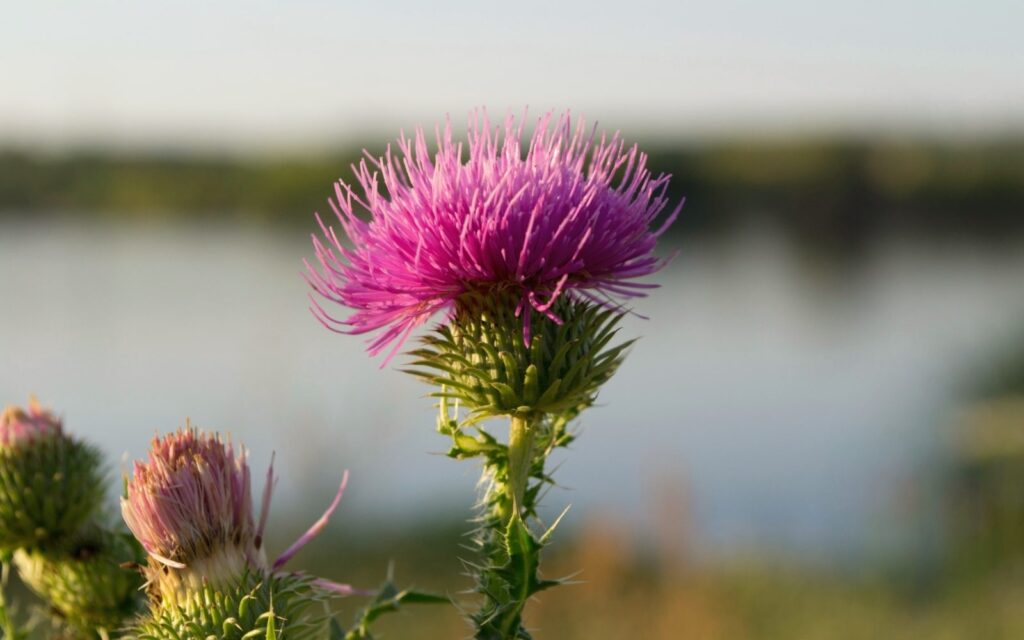
The Swamp thistle is a biennial plant found in wetland areas, drainage ditches, marshes, and canals. It grows 2–7 feet tall with several branches. The stems aren’t prickly but rather wooly. The low portions of the plant have leaves that appear oblong with gently pointed tips.
How to identify the Swamp thistle
The weed flowers are typically purple to pink and bloom up to 1.5 inches wide. The bracts on these non-spiny, woolly blossoms circles can have a visible light color patterned ridge.
The weed blooms and dispenses its seed between July to October. Tufted seeds mature and disperse throughout late summer into autumn. The weed grows in the waterlogged lawn that has moist wood or thickets.
Rosette leaves have a wavy margin and are hairy underneath, while you can find spiky margins around the edges. In summer, clusters of purple flower heads sprout from stem tips with spikes surrounding them.
How to control the swamp thistle
The best way to control this common weed is through biological control agents. These are most effective when they’re applied in the correct season. You can apply herbicides to the lawn from early spring to fall. Digging or tillage to get rid of this weed is usually ineffective.
2. Henbit (Lamium amplexicaule)
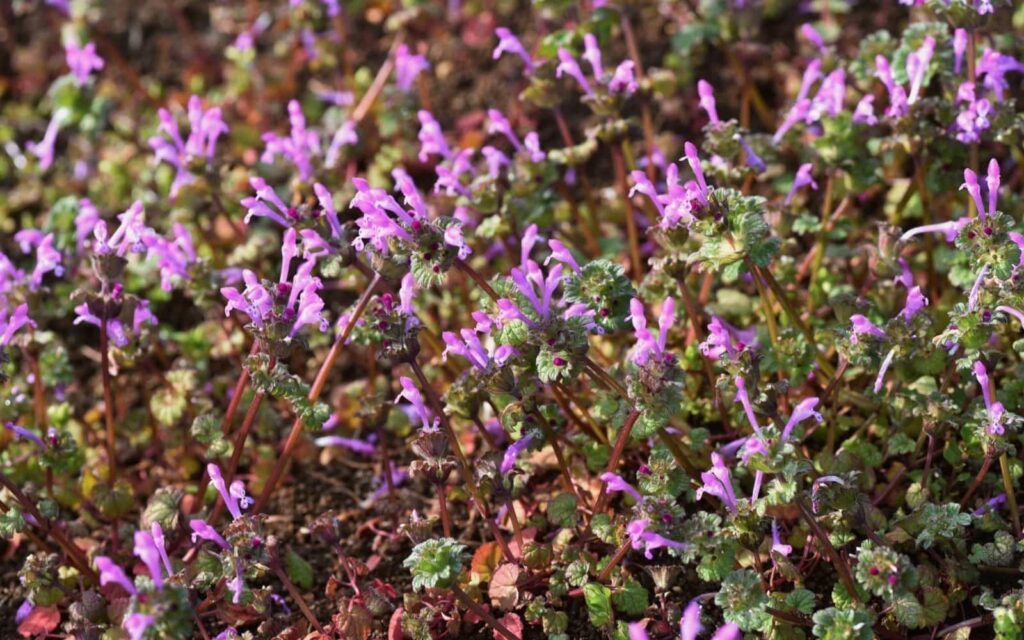
Henbit is an annual weed that you can find throughout North America. It has a square stem, a round or heart-shaped rosette of leaves with rounded edges.
It takes 5–6 weeks for the seeds to germinate in fall or winter. When they sprout, seedlings can be seen 15 days later. Flowers on this plant bloom mid-spring until early summer, after which they start to die due to hot temperatures.
How to identify henbit
The weed has a square-shaped stem at the bottom but rounds out near its leaves. The undersides of these leaf lobes don’t have any petioles attached to them and are connected directly to the main plant stem.
The rounded leaves are typically quarter inches long with round or heart-shaped ends with small teeth scattered on top and prominent veins sticking out. The flowers are red-purple with a white spot during the spring whorls.
How to control the henbit
Planting more weed-resistant plants will help control future problems with henbit. Preventing seeds from forming by thinning the yard is a good defense against henbit to avoid any new issue.
Applying herbicide is the most effective way to cripple their seed production. Pulling or hoeing them out, mowing if needed, would be another good option.
3. Forget-me-not (Myosotis)
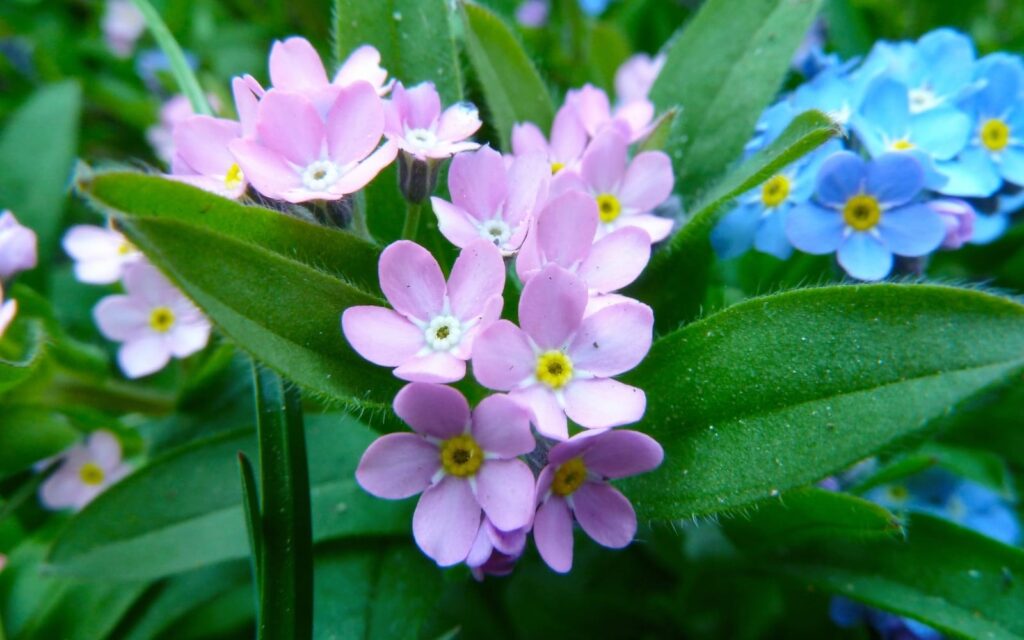
This innocent-looking weed can grow in woodlands, coastal areas, and fields. It has the potential to overpower other plants under shady conditions. This short-lived plant flowers in the summer and prefers well-drained soil.
It grows in partial to full sunlight areas and has invasive growing tendencies. In extreme cases, they can outcompete other naturally occurring plants and disrupt healthy biodiversity in the area.
How to identify Forget-me-not
This flower-bearing weed blooms purple flowers but can be bothersome when it grows too much. The weed plant grows small to medium size under 12 inches tall. It produces small, purple flowers on a gray and upright plant.
The leaves are shaped like an oval with hairs on the bottom forming a rosette. The blooming happens from April to September. It usually grows in ornamental yards, waste, and waterlogged ground, including cultivated land.
How to control the Forget-me-not
You can easily pull or remove the weed by hoeing and cultivating the soil. This is an effective strategy to manage small numbers of weeds. Removing roots usually stops them from coming back.
Glyphosate, used for weed control in most environments, is equally effective against Forget-me-nots. It also tends to be somewhat safer than many other herbicides. Spot treatment with a non-selective weed killer should be the last option.
4. Knapweed (Centaurea spp)
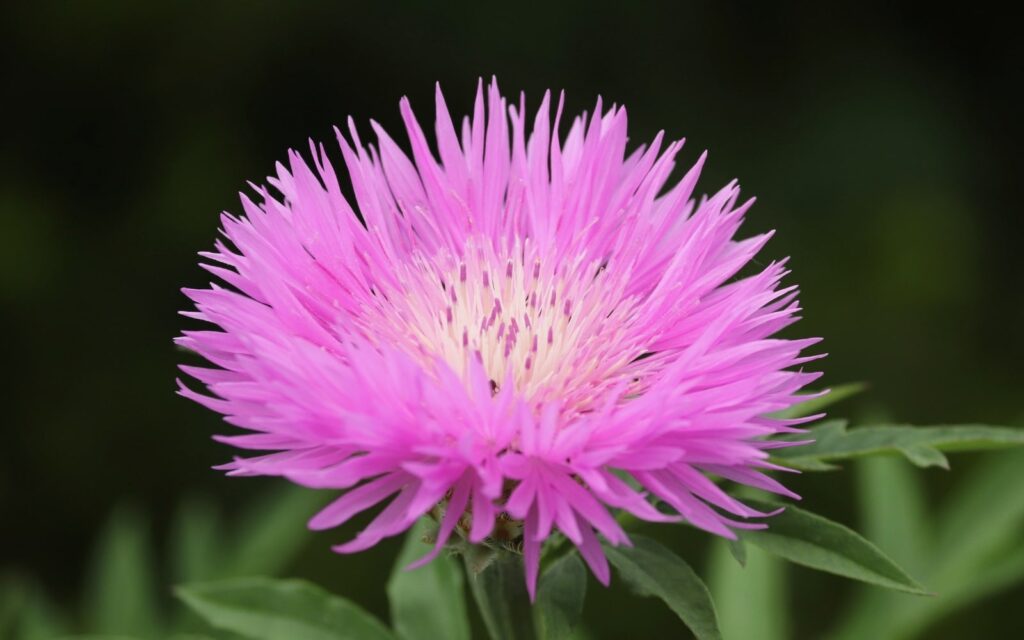
Knapweed is a prolific weed as it produces a lot of seeds. A single individual weed plant can produce thousands of seeds per square meter spread by wind and livestock.
Brown Knapweed is commonly found in lawns. Unliked spotted varieties, the weed spread out quickly and chokes out other desirable vegetation.
How to identify Knapweed
Spotted Knapweed has thick, branched stems that grow vertically from a taproot. As they move up the stem past each other, they become smaller until these leaves are too tiny to appear on top of the standing stalks.
These are short-lived perennial that sprouts from woody root crowns and reaches a height of 8 to 32 inches. The leaves of these common weeds are arranged with foliage of smooth hairs and blue-gray color.
The flower colors vary from white to variegated purple. Usually, the flowers are at the top of the branch.
How to control the Knapweed
There are a few ways to control Knapweed. One way is to apply a herbicide to the weed in its early stages of growth. Another way is to physically remove the plants from the soil, ensuring that it’s not too late in the season or you’ll have difficulty pulling them out.
You have to be extra careful to dispose of the pulled weed properly, or the seeds will further spread, and regrowth will occur.
5. Purple loosestrife (Lythrum salicaria)
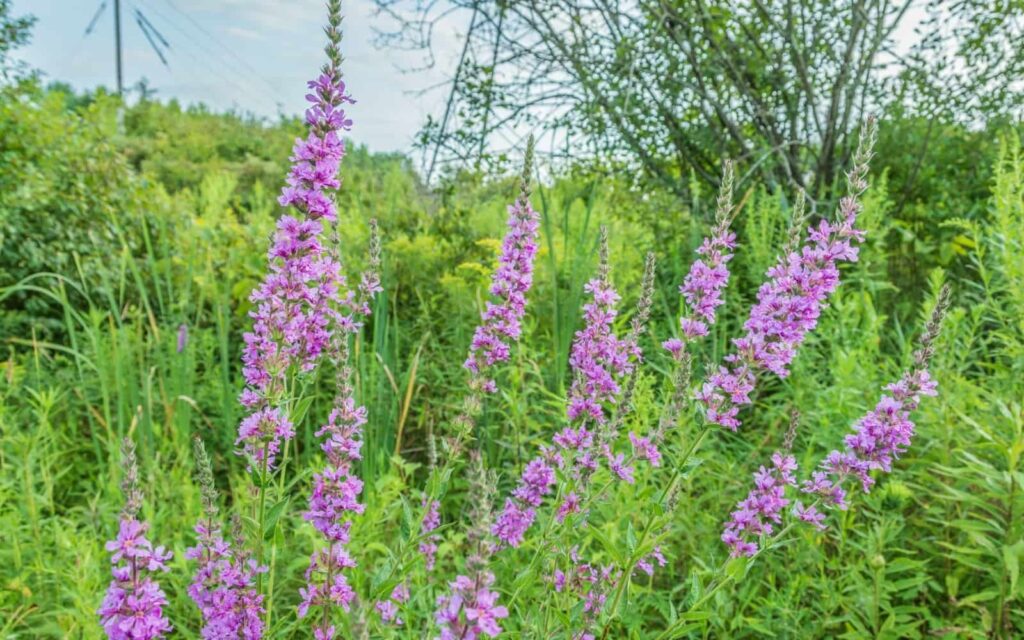
Purple loosestrife is a highly invasive, hardy weed those spreads aggressively and has become a severe problem in North America. The weed forms dense stands, and its aggressive growth habits quickly invade surrounding areas.
The plant reproduces in two ways: by seed and creeping rootstocks. Infestations can be harmful to water flow and vegetation.
How to identify Purple loosestrife
Each flower has between five and seven purple petals, about ten millimeters in length, and arranged in long spikes at the head of stems.
Leaves are lance-shaped, usually up to 5 inches long, with smooth margins that bloom small flowers in midsummer. The purple flower comes with five to seven petals at the end of the stem.
Each weed rhizome can produce 30 to 50 erect stems, which are woody and square. The height of one branch ranges from 2.4 m up to 1.5 m per plant.
How to control Purple loosestrife
Mowing, cutting, and pulling the plant are popular ways to control this weed. However, you have to remove all parts of the plant, including the upper stem, as the weed can regenerate from stem fragments.
Cut the purple loosestrife as they bloom to ensure that it won’t create more seeds. Herbicides may be impractical and uneconomical in controlling large infestations. But they do help control small infestations.
Hand wicking is a recommended technique for applying a herbicide. You can use the chemical directly to weed, which is more effective than broadcast spraying.
6. Creeping Charlie or Ground Ivy (Glechoma hederacea)
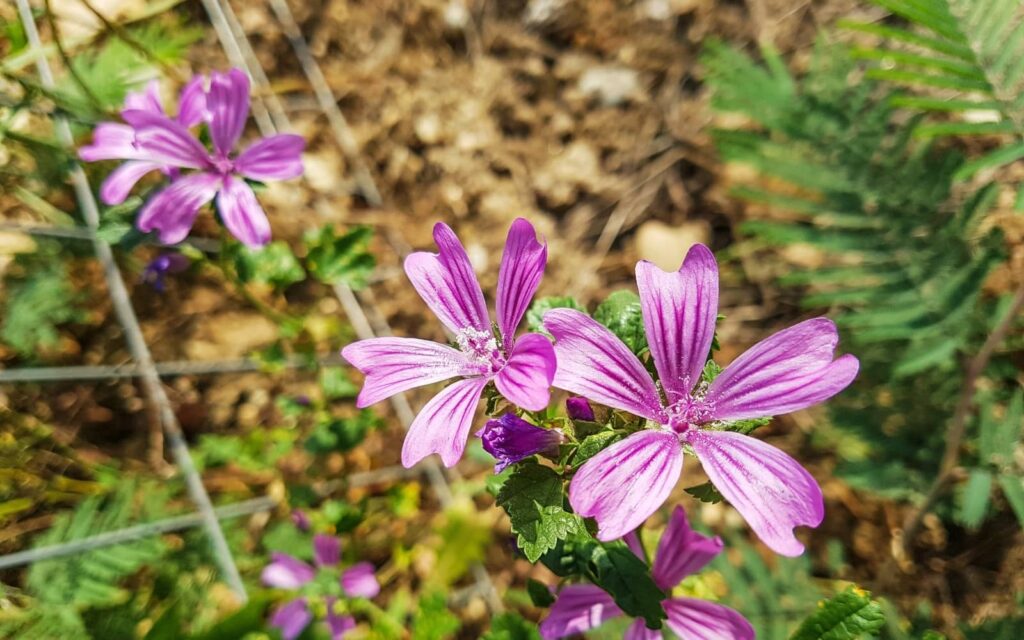
In the past few years, creeping charlie has become an invasive and uncontrollable broadleaf weed in many parts of the world. This belongs to the mint family growing in zones 2–12.
This weed thrives in harsh climates and can flourish anywhere because it’s resistant to various conditions that kill other plants.
How to identify Creeping Charlie
The weed’s vigorous growth generally forms a mat-like ground cover over the entire lawn and has a long creeping stem with nodes where scalloped leaves grow.
The kidney-shaped leaves have scalloped edges. The tiny purple color flower appears in late spring. The flowers grow up to 1 cm long and grow in three clusters.
How to control Creeping Charlie
This is a prevalent lawn weed that you can physically pull out from the ground for a small infestation. To make the lawn care job easier, you can lightly saturate the soil with water, making pulling weed easier.
You can also use the common weed whacker that allows you to pull these from the ground without needing to bend.
If you decide to use the non-selective herbicide for significant weed growth problems, you can use the glyphosate broadleaf herbicide that effectively controls its growth. You should spray it directly on the creeping charlie and repeat it a few weeks as needed.
7. Black Nightshade (Solanum nigrum)
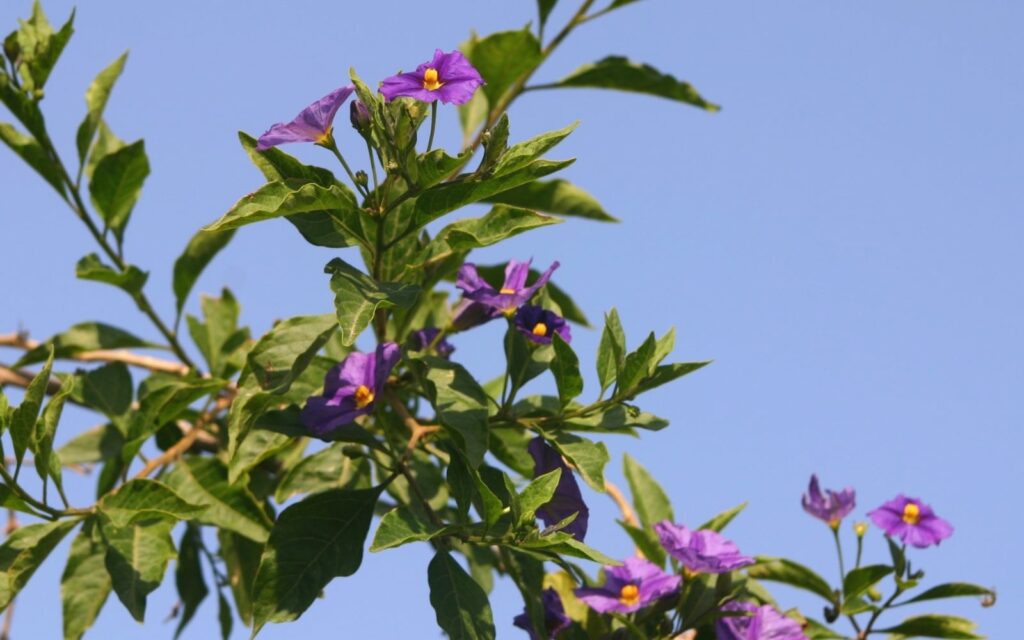
The Black nightshade is an annual summer weed. When the frost starts to set in early autumn, it dies off. It’s an aggressive grower creating competition for nutrients for other plants on the lawn.
You shouldn’t get it confused with deadly nightshade weed that looks the same but is toxic. It bears green berries that are a favorite among small birds and animals.
How to identify Black nightshade
This is an upright branched plant, occupying quite a bit of space within crops or gardens. Late in the season, when stress conditions such as cold temperature occur, the color changes to a purplish tone.
It’s a bushy plant that climbs on the wall or other plants and bears a white or purple flower. It has a very smooth broadleaf that has no hair on it.
How to control Black Nightshade
Nightshade can be controlled by cultivation or applying herbicide. However, some herbicides may not be as effective as those on other weeds.
For example, herbicides that contain chlorsulfuron or metsulfuron are effective on other weeds but ineffective on nightshade. The reason is that it quickly develops resistance to these chemicals.
It’s best to use bentazone contained herbicides to control nightshade growth. If you don’t have a whole lot to remove, you can physically pull it out with a weed whacker.
8. Purple Deadnettle (Lamium purpureum)
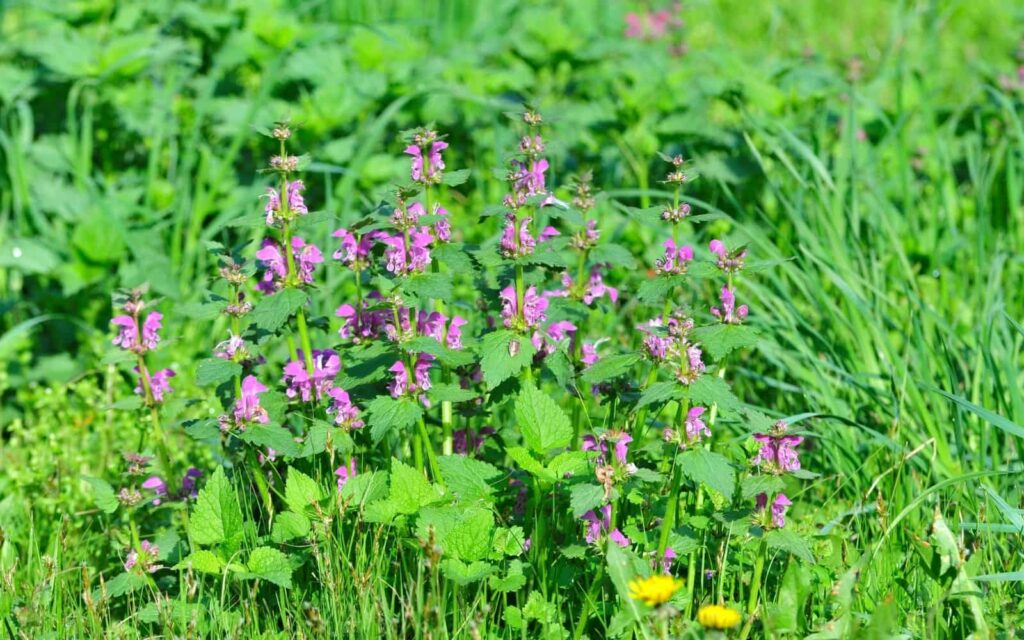
Purple Deadnettle is a perennial herbaceous flowering weed plant native to Europe. It has a similar leaf shape and color to the hound’s tongue.
The dark purple leaves are more invasive, although less prolific, and grow in clusters.
How to identify Purple Deadnettle
Purple deadnettle starts to come up in the fall and survive winter. It then develops flowers and seeds before dying when the temperature rises. This perennial weed is light in color and small in shape with squarish leaves of shallow lobes.
The flowers are primarily visible in April, but they bloom earlier and later, depending on the area. The flowers are light purple in color and tubular shape, with square stems.
How to control Purple Deadnettle
Purple Deadnettle weed has been a nuisance for many gardeners. They have a nasty habit of being all over their gardens and driveways. It’s a tough weed to control, but there are ways to handle it.
Use a hoe or shovel to remove plants from the ground. Then, apply an organic herbicide such as vinegar, soap, or liquid dish soap. You can spray it directly on the weed to kill it but be careful not to spray over plants that you want to keep.
You can also apply postemergence herbicides that contain pelargonic acid and acetic acid. These are very effective in controlling aggressive growth. Another option is to use 2, 4-D, dicamba, or fluroxypyr contained herbicide that is equally effective.
9. Wild violet
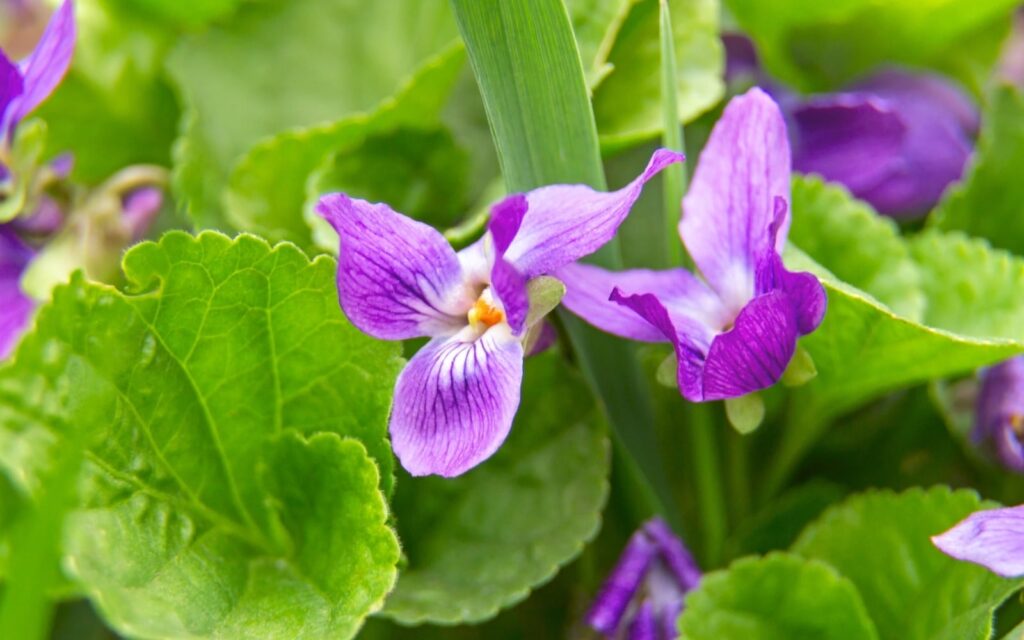
There are many names for the wild violet, a perennial plant native to Europe, western Asia, and northern Africa. Some people categorize it as a weed because of its elusive stems and leaf shape.
The perennial plant blooms a beautiful purple color flower. It propagates from its seeds that get spread through wind and rainfall while spreading its rhizomes under the ground.
How to identify wild violet
You can find these garden weeds growing in moist, shady areas as their fibrous roots grow well outside arid, sunny locations.
Springtime flowers are usually violet to purple, ranging from deep blue to white with heart-shaped green leaves and delicate stems. The flowers appear on their leafless stalks, and these broadleaf plants have waxy serrated leaves that are oblong at the tip.
How to control wild violet
Here is the deal, the defensive waxy layer on the leaves makes it hard for herbicides to penetrate them, leading to aggressively getting uncontrollable fast.
Fall is the best time of year to protect your lawn from this weed. Spot treatment with herbicide works well for minor invasions but should be applied with care; otherwise, it could lead to brown spots in a lawn.
How do you get rid of weeds with a purple flower on your lawn?
When it comes to getting rid of these weeds, there are several things that you can do for lawn care. Here are some steps you can take to get rid of this pesky weed.
- Remove plants manually or use a hoe or shovel
- Apply organic herbicides such as vinegar, soap, boiling water, salt crystals, liquid dish soap (2 tablespoons per gallon), or liquid castile soap (1 tablespoon per quart).
- Mulch the area with straw
- Repeatedly till the soil
- To prevent future infestations, make sure not to plant any other weeds in your garden and be diligent about weeding
Conclusion
In conclusion, to prevent purple weeds from destroying your garden, you should identify the weed then eradicate them using the proper methods.
Admittedly, not all might be an eyesore, and some gardeners may want to keep them as an ornamental plant. But as some are invasive, it’s not advisable to leave them there, but it’s a personal decision one has to take.
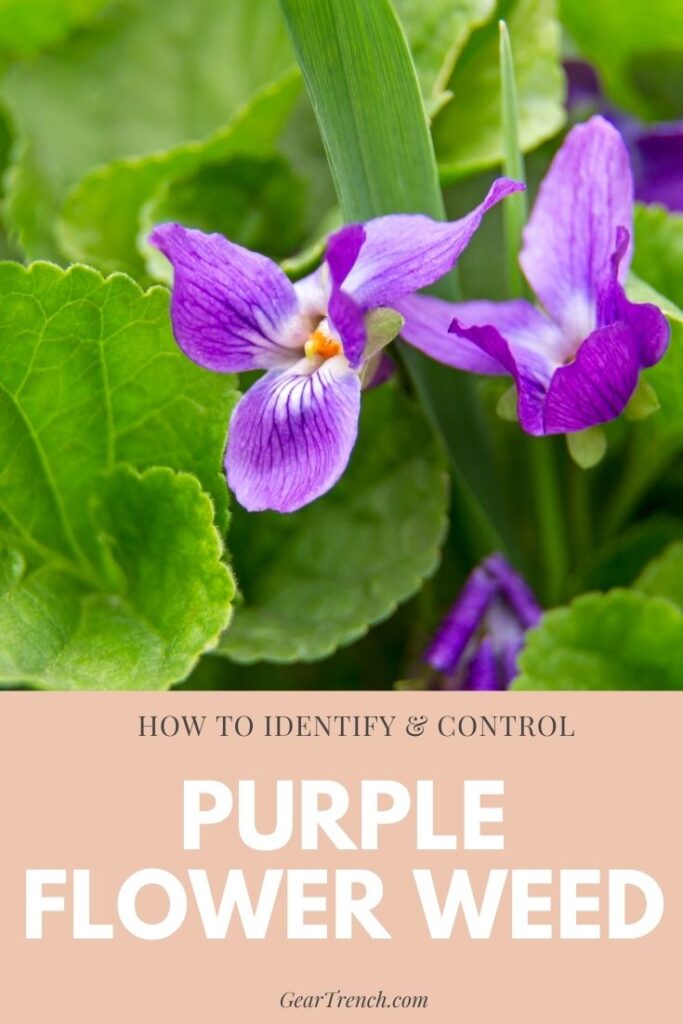
Don’t forget to share this post

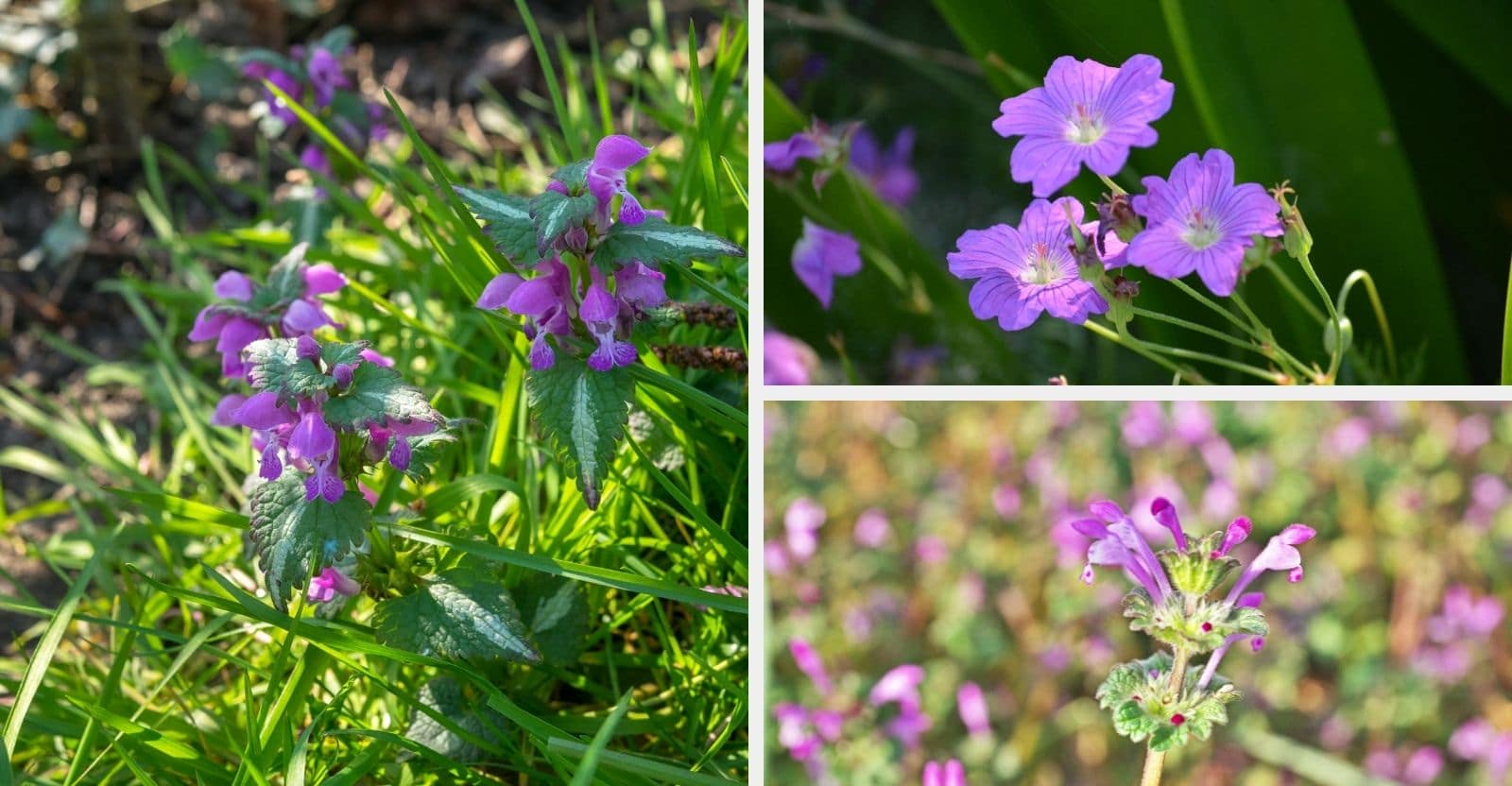
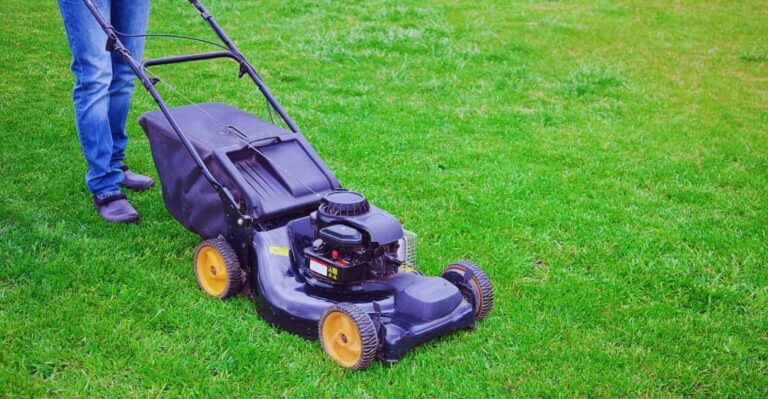




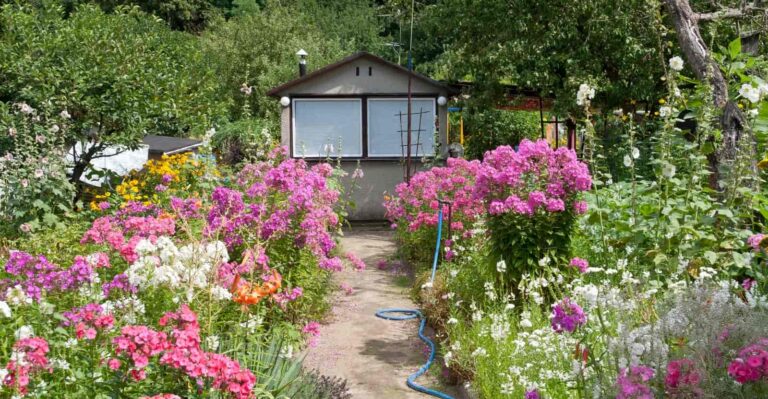
Thanks for sharing. I absolutely loved your ideas.
What kind of herbicide can you use to kill them? Purple plants and I have a jack in the bean stalk tree right over my sewer line will it grow down to my storyline about 68 feet? I think I should cut it down. How do IWhat kind of herbicide can you use to kill them? Purple plants and I have a jack in the bean stock tree right over my sewer line will it grow down to my storyline about 68 feet? I think I should cut it down. How do I get it to not sprout again? How do I get it to not sprout again?